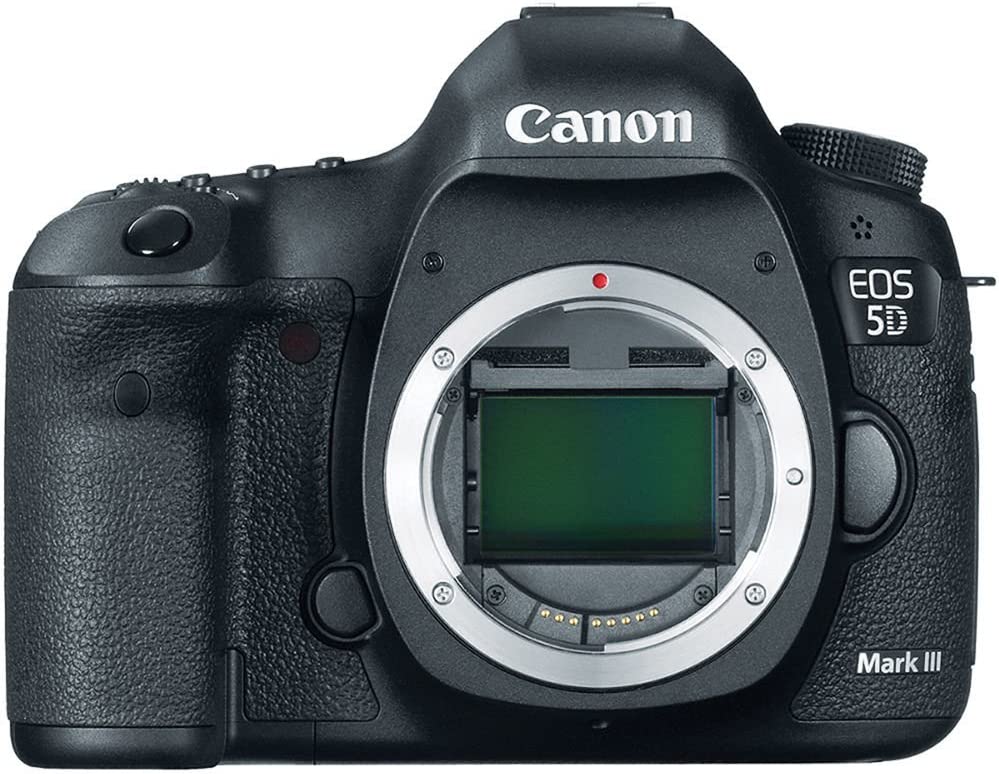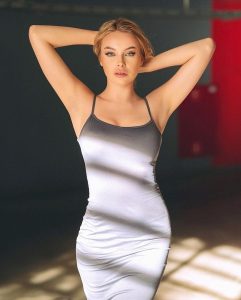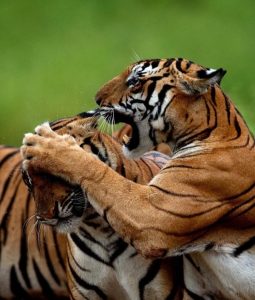Last Updated on December 6, 2023 by Sharon Advik
Canon 5D Mark III Review:
Even though capturing images of racers racing, athletes, and balls whizzing through the air was difficult, I started my career as a sports photographer.
However, I was helped in getting the job by one of my friend’s references.
Since it was my first project, I wanted to get it right to avoid disappointing my clients.
I was initially anxious, but I knew I had someone on my side: my “Canon 5D Mark III” camera.
I used it to record the entire Italian auto-racing competition.
Provide lots of space for your subject if you want entertaining sports photos.
Here, a good sports camera will come in handy.
Throughout the event, the camera’s skill and contrast are outstanding.
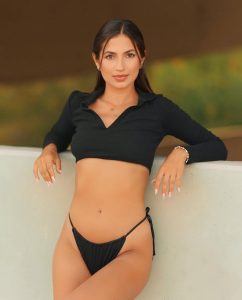

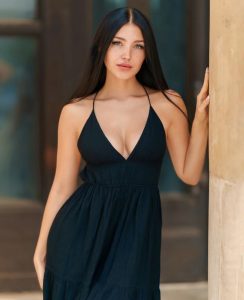
Overview:
With remarkable still and moving image photography capabilities, the Canon 5D Mark III is an actual “superstar” camera.
Although its resolution is somewhat higher than the 5D Mark II, the Canon 5D Mark III delivers so many upgrades over its predecessor that many 5D Mark II owners will find it easy to upgrade.
It meets the needs of well-off enthusiasts and working professionals equally well.
The Canon EOS 5D Mark III is the much-anticipated successor to the Canon EOS 5D Mark II, having taken four years to develop.
Unlike Mark II, which replaced Mark I, Mark III is more of an evolutionary improvement.
As an upgrade to the well-liked 5D Mark II, the Canon 5D Mark III was released in 2008.
Built on the success of its ancestor and with the most cutting-edge focusing technology Canon has yet provided from its EOS-1D X range, the Canon 5D Mark III is a reasonably promising addition to the 5D line.
The 5D Mark III appears to be aimed at all types of photography, from landscapes and fashion to sports and wildlife, thanks to its improved picture sensor with a native ISO range of 100 to 25,600, fully weather-sealed camera body, 6 fps burst shooting speed and dual card compatibility.
Specifications:
Sensor: 6.25-micron full-frame CMOS sensor with 22.3 MP resolution
Sensor Dimensions: 36 x 24 mm
Dimensions: 5760 by 3840
Low ISO Sensitivity Boost: 50
100–25,600 native ISO sensitivity
High ISO Sensitivity Boost: 51,200–102,400
Yes, a sensor cleaning system.
DIGIC 5+ image processor
61-point high-density reticular autofocus system (up to 41 cross-type points)
Optical system: Canon EF
Weather Protection/Sealing
Full magnesium alloy body type
Up to 1/8000 sec. of exposure time for the shutter
Storage: 1x CF and 1x SD (compatible with SD/SDHC/SDXC)
Pentaprism viewfinder with 100 percent coverage and 0.71x magnification
Speed: 6 FPS
5 EV of exposure compensation
63 Zone iFCL Metering System exposure meter
LCD has a 3.2-inch diagonal and 1,040,000 dots.
Design:
The Canon 5D Mark III sports a magnesium-alloy weather-sealed body, making it as durable to use in almost any environment as the earlier Canon 5D Mark II and the Nikon D800.
It is constructed like a tank, as some people like to claim.
The camera has a strong feeling in your hands and appears built to endure a long time.
In scorching and cold environments—including a wet May in Florida and below-freezing temps in the Rockies of Colorado—the 5D Mark III functioned faultlessly.
High winds in a dusty area were also no problem.
However, I would advise caution because dust can enter a camera through a lens in such conditions (This is perfectly typical and relevant to all DSLR cameras).
Size and weight:
The Canon 5D Mark III is comparable to the Mark II in size and form.
However, it is a touch heavier.
The grip is the ideal size for the camera body.
However, it could be a bit big for small hands; it comfortably fits my medium-sized hands.
Canon states that the body alone weighs 30.3 ounces (860g).
It weighs 50g more than the 5D Mark II, or 1.7 ounces.
The item measures 6.0 x 4.6 x 3.0 inches (152.0 x 116.4 x 76.4mm). Only the height and thickness have risen by around a millimeter.
The Canon 5D MIII is a notably weighty camera for its class compared to the 773g average weight of DSLR-type cameras.
It has an average thickness measuring 76mm.
Handling:
In my opinion, the Canon 5D Mark III has excellent handling.
Since its grip is more extruded and comfortable, I prefer it to the D800.
The camera’s controls, which I also feel to be very well designed and considerably better than those on the 5D Mark II, are very similar to those on the Canon 7D.
As expected from a camera in this category, the camera is highly programmable, and the company has programmed many to carry out various tasks.
The absence of a rear dial was the hardest to adjust to.
I am incredibly accustomed to Nikon DSLRs’ twin dial configuration (one on the front and one on the back), simplifying adjusting aperture and shutter speed in various camera modes.
The top rotary dial behaves differently depending on your method when using the Canon 5D Mark III.
For instance, the dial adjusts the lens aperture in aperture priority mode and the shutter speed in shutter priority and manual modes.
The large rotary dial on the camera’s rear is used to adjust the aperture manually and for exposure correction in aperture and shutter priority modes.
Sensor and DXO mark:
The picture sensor in modern digital cameras is, without a doubt, its most crucial component.
The sensor performance is still considered, even if you pack the most cutting-edge autofocus and metering systems with a boatload of fantastic features into a camera.
The sensor’s physical size and relationship to factors like dynamic range, diffraction, color depth, and ISO performance are all closely related.
The “native” ISO range of the Canon 5D Mark III has been increased from ISO 6,400 to 25,600, according to Canon, which claims that the sensor is significantly superior and has a two-stop improvement over the Canon 5D Mark II.
It sounds like a significant difference, resulting in much better-looking Canon 5D Mark III images, especially when high ISO images are down-sampled to a lower resolution.
The sensor underwent certain physical modifications.
Although the device’s physical dimensions remained unchanged, the resolution increased by nearly a megapixel, from 21.1 MP to 22.3 MP.
Technically speaking, this resulted in more excellent solutions and improved low-light performance.
Since 2007, DXO Mark has generated sensor performance measurements using a standardized process.
This service, which is based on laboratory testing, rates each camera sensor overall and provides ratings for its dynamic range (“DXO Landscape”), color depth (“DXO Portrait”), and low-light sensitivity (“DXO”) (“DXO Sports”).





Noise Reduction:
You can get more detail from an image by converting the raw files, even at ISO 50 or 100.
The Canon’s JPEGs are straightforward and noise-free but have noticeably damaging noise reduction done to them at all ISOs.
At low ISOs, reducing noise is useless; ISO 1600 is the point at which a difference between the “Off” and “Standard” settings can be seen.
However, even the ‘Offsetting does not indicate that there is no noise reduction at all.
Instead, there is a constant baseline amount of chroma noise reduction.
The noise reduction setting regulates how much extra noise reduction is applied on top of this initial level.
The NR “Off” settings provide more fine detail than the “Standard” and higher sets at higher ISOs; however, at very high ISOs, such as 25600 and above, the “Standard” setting is preferable because the noise levels would otherwise be too intrusive.
Overall, the deficient measured noise levels across the ISO range; however, higher sensitivity settings result in a loss of fine detail.
Only use the two extended settings, ISO 51200 and 102400, in emergencies.
However, the camera’s JPEGs are still useable up to ISO 25600, at least at smaller output sizes.
Autofocus:
As mentioned, Canon has included its best autofocus system in the 5D Mark III.
Canon chose to use the same professional AF system as their top-of-the-line Canon 1D X DSLR rather than the outdated 9 focus point system with a single cross-type sensor, and the 5D and 5D Mark II models were affected.
The 5D line would have been seriously threatened if Canon had stuck with its outdated AF system, rendering the 5D Mark III an ineffective improvement.
The most cutting-edge AF system that Canon has created to date, the new 61-point AF system focuses on the camera’s fascinating aspect.
Canon is very serious about repairing its shattered reputation, as seen by its staggering 41 cross-type sensors.
My objective was to evaluate Canon’s 61-point AF system and see how it compares, especially when shooting in low light conditions, having been spoilt with a great AF system.
I noted my observations as I shot using the Canon 5D Mark III in various scenarios.
Even with dim lighting, the Canon 5D Mark III’s central focus point is rapid and precise.



Continuous Shooting and Buffering:
The EOS 5D Mark III’s 6 frames per second in Continuous Hi mode make it a capable tool for capturing fast-moving scenes; additionally, it is quicker than the 5D Mark II or the Nikon D800 (4 fps / 5 fps in DX mode), the Mark III’s closest rival (3.9 fps).
A fast CF memory card with the 5D Mark III’s big image files is advised, especially if you intend to shoot bursts in Raw+JPEG mode.
I discovered that while the SD card slot does not employ the fastest cards currently available, the CF card slot does.
There was no performance difference between SD cards with 45mb/s and 95mb/s transfer rates.
The count of frames in a burst is not essential when shooting JPEGs solely, regardless of the type of card you are using.
You can choose the Continuous Lo setting if you must constantly shoot for a long time but don’t mind a slower frame rate.
You can shoot at that speed with a fast card until the memory card is full.
It delivers a speed of three frames per second.
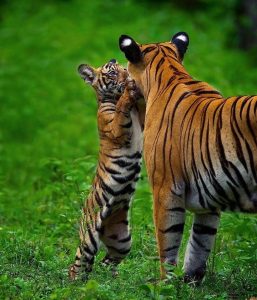


LCD and Viewfinder:
A Fixed Type 3.20-inch LCD screen with a 1,040k-dot resolution is featured on the Canon 5D MIII.
The Canon 5D MIII’s 3.20″ screen is more prominent than typical and meets class standards for resolution.
Sadly, the Canon EOS 5D Mark III lacks a selfie-friendly screen.
The built-in optical (pentaprism) viewfinder of the 5D MIII makes it simpler to take photos in shining sunshine and other situations where it might be challenging to see the LCD panel.
The viewfinder is 100% covered and has a magnification ratio of 0.71x.
To reduce the need for post-processing cropping and to help you frame your shots more accurately, 100% coverage ensures that what you see in the viewfinder when taking the picture matches what you will see later in your image.
Menus:
Spending time reading the handbook because there are many settings and options is a smart move, and each menu section is color-coded to help you quickly identify the locations you want to alter.
Click the Q button to rapidly access the control panel on the back screen.
The camera’s slowest shutter speed before increasing the ISO setting can be changed in the auto ISO mode, giving you control over the available ISO range.
Being able to grade your shots on screen on a scale of one to five is another excellent feature for anyone taking many photos.
You can choose the autofocus (AF) scenario best suited for your shooting situation from those already integrated within the Canon EOS 5D Mark III.Acceleration/deceleration tracking, AF point auto switching, and tracking sensitivity can all be altered by +/-2. Pushing the INFO button will bring up the menus’ built-in help.
Memory Card:
I found that the CF card slot uses the quickest cards currently available, whereas the SD card slot does not.
There was no performance difference between 45mb/s and 95mb/s transfer rate SD cards.
Regardless of the type of card you are using, while shooting only JPEGs, the number of frames in a burst is not crucial.
You can change to the Continuous Lo mode if you need to hit continuously for an extended period but don’t mind a lower frame rate.
You can shoot at that swiftness with a fast card until the memory card is full.
Three frames are delivered every second at this speed.
Battery:
The same LP-E6 lithium-ion battery pack utilized in the predecessor is included in the EOS 5D Mark III.
It has an 1800 mAh capacity, which, according to Canon, is sufficient for 950 photos (CIPA standard) or roughly one hour and thirty minutes of movie shooting.
When taking the test shots for this review, we discovered that the battery life was roughly consistent with Canon’s estimates.
As long as we left the office with a fully charged battery, we never had to worry about running out of power.
However, the optional BG-E11 battery grip may be worth the extra cost for those who prefer backup power.
Of course, your shooting environment and operational habits will significantly impact battery life.
Weather Sealing:
The Canon 5D MIII includes environmental sealings on its body, making it a weather-resistant camera that offers protection against water and dust ingress.
The Canon 5D MIII will serve you well if you enjoy taking pictures in the great outdoors and need to be able to operate your camera in challenging circumstances.
Your camera will become a fantastic all-weather tool if you use one of these Canon 5D MIII weather-sealed lenses.
Lenses:
There are 257 native lenses now available for the Canon 5D MIII’s Canon EF lens mount.
Canon can remain the top choice among professional photographers worldwide because of the EF mount’s most extensive and comprehensive native lens selection in the DSLR market.
Even though the Canon 5D MIII lacks a sensor-based image stabilization system, 77 of these lenses already include optical image stabilization.
Canon 5D MIII Weather-Sealed Lenses
You may pair the weather-sealed body of the Canon 5D MIII with 88 weather-sealed lenses.
Here are some of the best lenses I have used with this camera, Canon 5D MIII.
- Canon EF 24-105mm f4L IS USM
- Canon EF 75-300mm f4.0-5.6 III
- Canon EF 70-300mm f4-5.6 IS USM
- Canon EF 70-200mm f2.8L IS II USM
- Canon EF 35-350mm f3.5-5.6L USM
- Canon EF 80-200mm f4.5-5.6 II
- Canon EF 35-80mm f4.0-5.6 III
- Canon EF 50mm f1.8 STM
Video Feature:
With the Canon 5D MIII, you may record films with a maximum resolution of 1920 x 1080 at a frame rate of 29.97,25,23.976 and store them in the H.264 format.
In most circumstances, the Canon 5D MIII’s Full HD resolution will be sufficient.
However, if you’re looking for footage with the best resolution possible, check out our Top Cameras with 4K (Ultra-HD) Video list.
You might also consider its successor, the 4K video-capable Canon 5D MIV.
The mono speaker and microphone on the 5D MIII are built-in.
Additionally, the Canon 5D MIII has a connector for an external microphone and a headphone port for attaching external headphones, making it an excellent camera for high-quality filming.
Full resolution (1080p) options include 30/25/24fps, while 720p offers 60/50fps.
Multiple frames are compressed using IPB, while a single frame is compressed using ALL-I.
Twenty-nine minutes and 59 seconds is the maximum record time.
You can also change the level of the built-in mono microphone, and a wind filter is an option.
If you enable silent operation, the rear scroll wheel can be used as a d-pad while recording.
The camera supports a drop frame and an automatic time code correction feature.

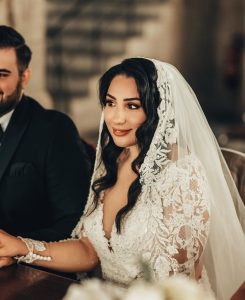


Photography Type:
I considered testing this camera’s capabilities in another photography genre after being pleased with its proficiency in sports photography.
Daily Photography:
Even if most photographers concentrate on one or two distinct photographic genres, experimenting with different shooting methods could help you discover something new.
I would describe it as “daily photography.”
Numerous photographic styles can be created with the same technical and aesthetic abilities.
It implies that if you are successful in one area, you may learn valuable skills and practices that will make you a better photographer.
The finest photography for it is unposed, commonplace photography.
You may take many different kinds of pictures with just one excellent camera.
Portrait Photography:
Portrait photography, also known as portraiture, tries to depict an individual’s or a group of people’s personalities through the appropriate lighting, backdrops, and poses.
An artistic or expert portrait photograph is possible.
More than 200 years later, portraiture remains one of the most popular creative genres.
For a good reason, portraiture is one of the most well-liked photographic subgenres.
Talented portrait photographers can support themselves by taking pictures of events such as weddings, seniors, families, and other gatherings while capturing the character and emotion of persons in the background.
A SUITABLE choice for this kind of photography, the Canon 5D MIII scored 65 for Portrait Photography.
Why should one get the Canon 5D Mark iii?
- A headphone jack permits audio monitoring while recording for better sound control.
- A more thorough look possesses a viewfinder with a broader field of vision (100 percent).
- It has a larger back LCD (3.2″), which helps view photographs and adjust settings.
- Higher mechanical shutter speed (1/8000s) to freeze activity; a faster shutter.
- Better studio light control: Connects to professional strobe lights through a PC Sync connection.
- Greater assurance: Provides a backup card slot if the memory card fails.
- It has a more significant discount: it has been around for much longer (launched in March 2012).
Price:
Although the company briefly stopped shipments of the Canon 5D Mark III while fixing a light leakage issue in early units, the camera’s body-only street prices in early 2013 ranged from US$2,600 to US$3,300, with most authorized dealers pricing the camera at around US$3,000.
The Canon 5D Mark III first began shipping in April 2012.
Conclusion:
Resuming the subject, the Canon 5D Mark III is a fantastic camera for any photographer looking to advance their photography.
If you are progressing past the novice level of photography, a professional camera is needed.
The fact that we can still say this about this device speaks much about its quality.
This versatile gadget is a fantastic camera that can take beautiful pictures in a range of settings and has a large selection of lenses to go with it.
Related posts:
I am a Professional and Certified Digital Photographer born in the USA. I have been in this field of photography for 22 years, and in these years, I have used many photography lenses and Cameras, which I want to share here on this website about my experience. The idea for Bestoflens.com is to provide honest information about different Lenses and Camera products in the format of a “Best lenses for AYZ” list. I want this website to be the last destination for people to pick the best Cameras and lenses to fit their needs. You can find our unbiased reviews here on Bestoflens.

